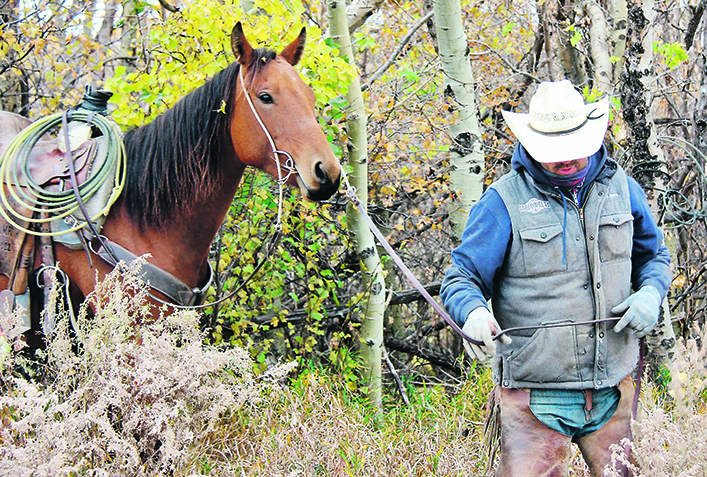After years of moving his cattle by trailer in the fall, this year a Sask. rancher decides to do things the old-fashioned way
CANDIAC, Sask. — They could have hauled the cattle home by trailer. Or they could have used ATVs.
But not these cowboys. These cowboys know that the best way to do it is the way it’s been done for centuries — on horseback.
“Horses are more suited to chasing cattle than quads,” said Brian Ross, a 72-year-old rancher who travelled for hours to help fellow cattle producer Kevin Williams bring his cows home for winter.
Williams, a semi-pro team roper, grew up on a mixed farm where tractors and farm equipment took precedent over horse power. The fourth of five children, he did not follow in his father’s grain-farming footsteps. Instead, he was drawn to anything that involved horses and cattle.
Read Also

Farming Smarter receives financial boost from Alberta government for potato research
Farming Smarter near Lethbridge got a boost to its research equipment, thanks to the Alberta government’s increase in funding for research associations.
“From a little boy, riding was all I ever wanted to do,” said Williams, who is now 56 and still team ropes competitively. “My dad would ask my brother, ‘I wonder where he got that from?’ ”
What Williams couldn’t find for cowboy lifestyle at home, he found just down the road. In his early 20s, Williams worked nearby for rodeo-stock contractor Barry Quam. He later went on to buy Tommy Taylor’s ranch when a pregnant mares urine contract was offered to him in the 1980s.
He was quick to start training his own saddle horses and to establish a herd of long-horn cattle, which were sold commercially and used as rodeo stock. His three children grew up riding, with his youngest daughter taking up barrel racing and his second son now competing in team roping in Alberta.
After the kids moved away from home, Williams hauled his 160-head of cattle home by trailer for years. But this year he decided that the time was right to get back to basics and make the 16-kilometre trek on horseback.

“It’s just trying to keep a bit of the old West alive,” said Williams, explaining that COVID-19 isolation gave him time to reflect on how rushed and mechanized his ranching practices had become.
“I could have hauled them home but it probably would have taken longer and put more stress on that animal than walking them home the 10 miles.”
After spending the spring and summer helping on area ranches with brandings and cattle drives, it was easy for Williams to attract an experienced group of riders.
The early October weather was ideal and Joan Williams’ hot chili lunch eaten midway through the six-hour ride offered a nostalgic feel and camaraderie that the cowboys cherished.
“Sometimes, it takes a good crew to do stuff like this and we just don’t have that many employed people to do that, so we help each other out,” said Ross, adding that it’s also a special time to be able to ride with friends.
“It’s always a little more fun if you have a group, especially a group of cowboys.”
Horse trainer Bruce Dunham of Indian Head, Sask., joined the cattle drive as well, echoing Ross’s sentiments that nothing is better than riding out across the prairie.
“All I’ve ever wanted to be is a cowboy so when you get to get out like this and do real stuff, it’s great.”
All five riders agreed that bringing cows home by horseback is still the best way to go.
Ross said the advantages of being on horseback are the elevated wide views you can get of the herd, as well as the ability to rope a lost or injured animal and deal with them on the spot. In addition, said Ross, riding is simply the best way to spend a day.
“There’s nothing like getting on a horse and going for a ride to make you forget your problems.”
As for Williams, he hopes to bring his cattle home by horseback more often.
“People should be doing more of this—taking time to slow down.”

















